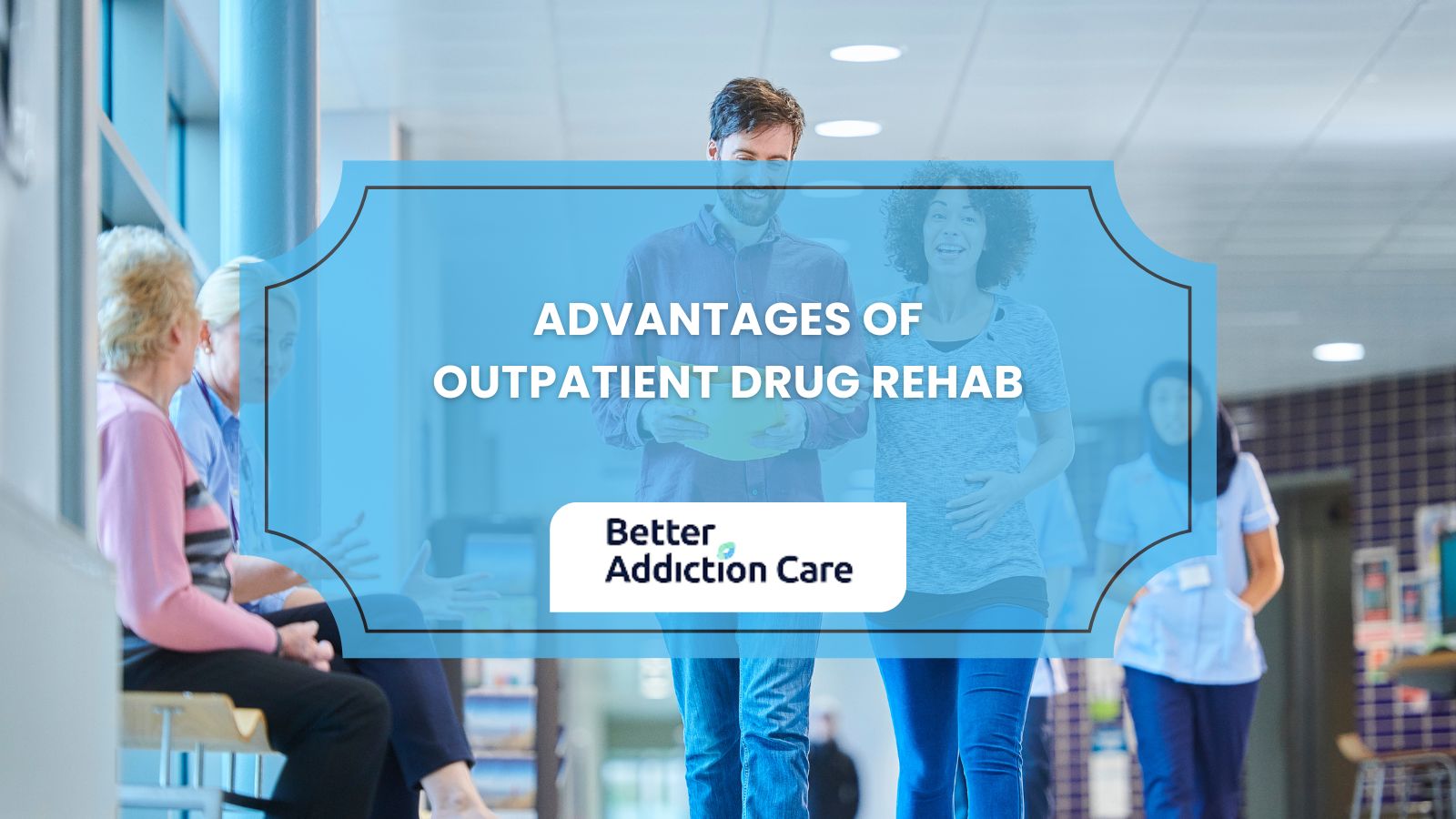Most of these centers offer a healthy environment for people to improve themselves and help them learn important life skills, find a job, and receive counseling. Residents of a halfway house are obliged to follow a set of rules and restrictions. For example, they are subject to drug and alcohol testing and must attend group meetings or therapy sessions.
The key purposes of halfway houses are to help people remain sober, develop the required living skills, find stable accommodation and jobs, and ultimately get back into society as productive members. Those escaping difficult circumstances highly depend on halfway houses during rehabilitation.
What Is a Halfway House?
A halfway house is a transitional living facility that provides structured housing, support, and rehabilitation services for individuals recovering from addiction or reentering society after incarceration. Halfway houses serve as a bridge between intensive treatment programs or correctional facilities and independent living, offering accountability, peer support, and access to counseling or employment resources.
Enforcing rules such as sobriety, curfews, and participation in recovery activities creates a stable environment that reduces relapse risk and promotes reintegration into the community. Their role is especially important in addiction recovery and criminal justice reform, where gradual reintegration improves long-term outcomes.
Who Uses a Halfway House?
Individuals who use a halfway house include those transitioning from inpatient addiction treatment, incarceration, mental health facilities, or homelessness as they work toward stable, independent living. These residents need structured support to rebuild life skills, avoid relapse triggers, and reintegrate safely into society. By providing accountability, peer support, and access to counseling or employment resources, halfway houses act as a buffer against high-risk environments, helping people maintain sobriety and stability during a vulnerable stage of recovery.
How Do Halfway Houses Support Rehabilitation?
Halfway houses support rehabilitation by providing a structured environment that balances independence with accountability, helping individuals transition from treatment or incarceration into stable community living. Halfway houses require residents to maintain sobriety, follow curfews, and engage in counseling or recovery programs, reinforcing healthy routines and relapse prevention skills.
Many also connect residents with employment assistance, education, and life skills training, which are critical for long-term recovery and reintegration. In addiction treatment and criminal justice, halfway houses serve as an essential step in reducing recidivism, supporting sobriety, and fostering sustainable independence.
How Is Life in a Halfway House?
A day in a halfway house is built around a system of a structured routine aimed at promoting stability, personal growth, and sobriety.
The day usually starts with a group activity, such as breakfast, and sometimes a meeting or a meditation session to set positive intentions. Residents wake up on the same schedule. In addition, the meetings allow the residents to share their experiences, give each other support, and set goals for themselves.
Residents can participate in various therapeutic activities during the day, such as individual or group therapy, life skills workshops, and educational sessions. The latter mainly focuses on building resilience and dealing with underlying issues. Options for sports activities to keep the body and mind healthy may also be available.
Community meals are shared, especially at lunch and evening meals, so the residents bond and socialize with each other. Housekeeping duties and commitments are usually delegated to occupants as a part of their everyday tasks, developing accountability and aiding in the upkeep of the housing.
Evenings can include supplementary group gatherings, peer meetings, or activities promoting relaxation and social interaction. Another facet of halfway houses is that some impose a curfew to show that the residents are well-rested and have a healthy sleep schedule.
Residents are supposed to adhere to the rules throughout the day, which do not include using any type of drug or alcohol. In contrast, they are involved in attending activities or counseling sessions.
In general, day-to-day life in a halfway house is marked by structure, support, and personal responsibility. It targets recovery and a healthy lifestyle rather than a strict rehabilitation process.
Why Is It Recommended to Go to a Halfway House?
It is recommended to go to a halfway house because it provides a structured, supportive environment, Transitioning Skills that promote sobriety, accountability, and successful reintegration into society after treatment or incarceration.
Listed below are 5 several good reasons to consider a halfway house after completing addiction treatment.
- Structured Environment
- Support and Accountability
- Transitioning Skills
- Support From Peers
- Ongoing Treatment and Monitoring
1. Structured Environment
Halfway houses provide the necessary framework for sobriety. They provide a safe and supportive living environment for the residents to recover and not return to their old ways or environments.
2. Support and Accountability
The employees or counselors of halfway houses usually offer the residents accountability, direction, and support. The struggles of the painful person’s early recovery, conquering hurdles, and achieving sobriety goals depend much on the supportive network.
3. Transitioning Skills
Halfway houses provide residents with many opportunities to learn essential life skills such as money management, socialization, and accountability. After an addiction is overcome, these skills are critical to reintegration into the community.
4. Support From Peers
Recovery patients can also form associations with people undergoing the same road once they live back in a facility called a halfway house. Patients benefit the most from peer support through exchanging stories, supplying words of support, and keeping one another responsible as they work toward recovery.
5. Ongoing Treatment and Monitoring
Most halfway houses demand that tenants participate in ongoing treatment, counseling, or support group sessions. People get free from the addiction, remain abstinent for a long time, and deal with underlying problems through ongoing therapy and monitoring.
All in all, a family-like setting under control can help such a person live a normal life without returning to drug abuse; thereby, the person will be better able to live in society and find a job.
How Do Halfway Houses Support Reintegration Into Society?
Halfway houses support reintegration into society by offering a transitional space where individuals can rebuild life skills, employment stability, and social connections while maintaining accountability in recovery. Residents are encouraged to pursue work, education, and community involvement, which fosters independence and reduces the stigma often associated with addiction or incarceration.
Structured rules, such as sobriety requirements, curfews, and peer accountability, create a supportive framework that helps prevent relapse and recidivism. In the broader context of rehabilitation and community safety, halfway houses act as a bridge between institutional care and full independence, giving people the tools and support necessary to successfully return to society.
How Does a Halfway House Differ From Sober Living Homes?
A halfway house differs from sober living homes in its structure, purpose, and level of independence, with halfway houses being more regulated and sometimes court-mandated, while sober living homes emphasize peer support and autonomy.
Feature
|
Halfway House
|
Sober Living Home
|
Structure & Rules
|
Highly structured with fixed meals, curfews, chores, and scheduled programs |
Flexible routines with peer accountability, optional meetings, and self-management |
Governance & Funding
|
Often government-run or tied to court referrals |
Privately owned or operated by nonprofits |
Purpose & Emphasis
|
Focuses on reentry, compliance, stability, and rehabilitation |
Promotes independence, long-term sobriety, and building a peer recovery community |
Residency Terms
|
Time-limited stays (often months) with specific requirements |
Open-ended stays that may last months to over a year |
In context, halfway houses act as structured transitional programs for those leaving treatment or incarceration, while sober living homes provide a more flexible, long-term environment centered on peer-based recovery and independent living.
Are There Rules in a Halfway House?
Yes, halfway houses have rules such as maintaining sobriety, following curfews, completing chores, and participating in counseling or recovery programs to ensure accountability and support successful reintegration.
The halfway houses segment of the population is stereotyped in such a manner that they are expected to abide by certain norms and rules. With these rules, they seek to create a sanctuary for individuals who need to mend and develop. Although the exact regulations could change from one institution to another.
Listed below are a few typical examples.
- Maintaining Sobriety
- Staying
- Participation in Group Meetings and Therapy Sessions
- Showing Respect for Others
- Household Chores and Obligations
- Compliance with Program Requirements
1. Maintaining Sobriety
Most halfway houses require that residents abstain from drug or alcohol use while living in such facilities. Random tests of drugs and alcohol at random can be employed to check for compliance.
2. Staying
Residing at the house is a condition of all halfway houses. It also promotes order and responsibility.
3. Participation in Group Meetings and Therapy Sessions
Residents may also be mandated to participate in therapy sessions, group meetings, or other programs directed at their rehabilitation and development.
4. Showing Respect for Others
Residents respect the personnel and other residents. The behavior of such persons is anticipated to be such that it does not harm or disturb others.
5. Household Chores and Obligations
Residents may be given specific chores and responsibilities to maintain cleanliness and order in the facility. The people who live there acquire a sense of community and shared responsibility.
6. Compliance with Program Requirement
The halfway house residents must comply with the program’s rules and standards, be part of the treatment programs, seek out job and educational opportunities, and achieve their personal goals as part of the program’s functions.
In general, the rules are intended to establish a disciplined and therapeutic setting that allows inmates to be accountable for their conduct, strive for change, and, ultimately, practically reintegrate into the community.
What to Expect from a Halfway House?
From a halfway house, you can expect a structured, substance-free environment with curfews, peer support, counseling requirements, and life skills training designed to promote sobriety and prepare for independent living.
Inside a halfway house, people are put in a supervised environment designed to help them move from rehabilitation to independent living; the key in these settings is to provide supervision while also allowing a certain level of independence. Staff commitment supports individual growth, which could involve getting orientation from a social worker to receiving clinical services. The different support services offered in a halfway house are part of the holistic care for residents.
Staying in a halfway house is dynamic and relevant to the fluctuating nature of recovery journeys. While some facilities have set lengths, both minimum and maximum, to promote progress, others have flexibility, and residents can manage their rehabilitation times. The spatial design of the halfway house leads to its communal nature, with different living styles encouraging a feeling of unity among the patients.
A crucial part of the halfway house process is the reintegration of residents into functioning citizenship, with employment and community involvement being central roles. Whether it is employment off-site or structured activities in the facility, the residents are prompted to develop a sense of purpose and responsibility. As part of these activities, medication management policies emphasize the holistic approach to health, which consists of the safe use of prescribed medications while constantly working on the mitigation of abuse.
How Much Does Living in a Halfway House Cost?
The cost of living in a halfway house ranges from $500 to $3,000+ per month, depending on location, services offered, and whether funding or insurance assistance is available.
The cost of a halfway house can differ depending on several factors. The location of the halfway house is an essential factor, as the living costs vary according to the region. Centers in higher-income or urban areas may be more expensive than those in rural or less populated areas.
Comfort also influences the price and services offered by the halfway house. A price premium may be associated with luxury facilities that offer more services, such as private rooms, transportation, opportunities for recreation, and employment support.
Another factor influencing the cost is the level of help the halfway house provides. Intensive support services usually cost facilities that charge higher fees for staffing and program implementation.
Residents who require such support can seek cheaper accommodation in halfway houses, which the government subsidizes. On the other hand, privately owned and operated facilities may charge more to cover operational costs and make a profit.
Health insurance also affects the expense of a halfway house stay. Some facilities allow residents to use health insurance to cover things such as therapy or counseling to help them save money.
Finally, the duration of the stay might influence the overall cost. In some facilities, charges are determined by the duration of your stay, for example, weekly or monthly fees.








